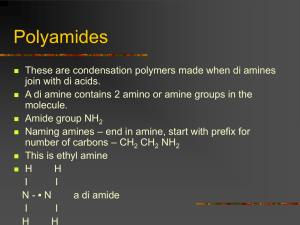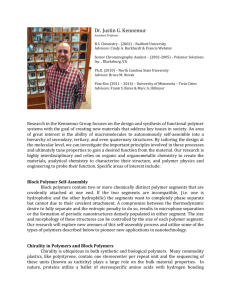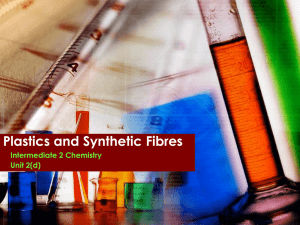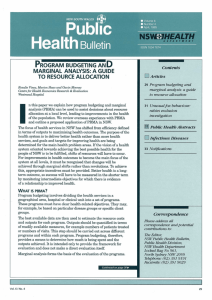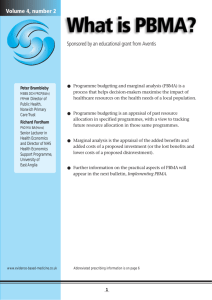DOI: 10 - Springer Static Content Server
advertisement
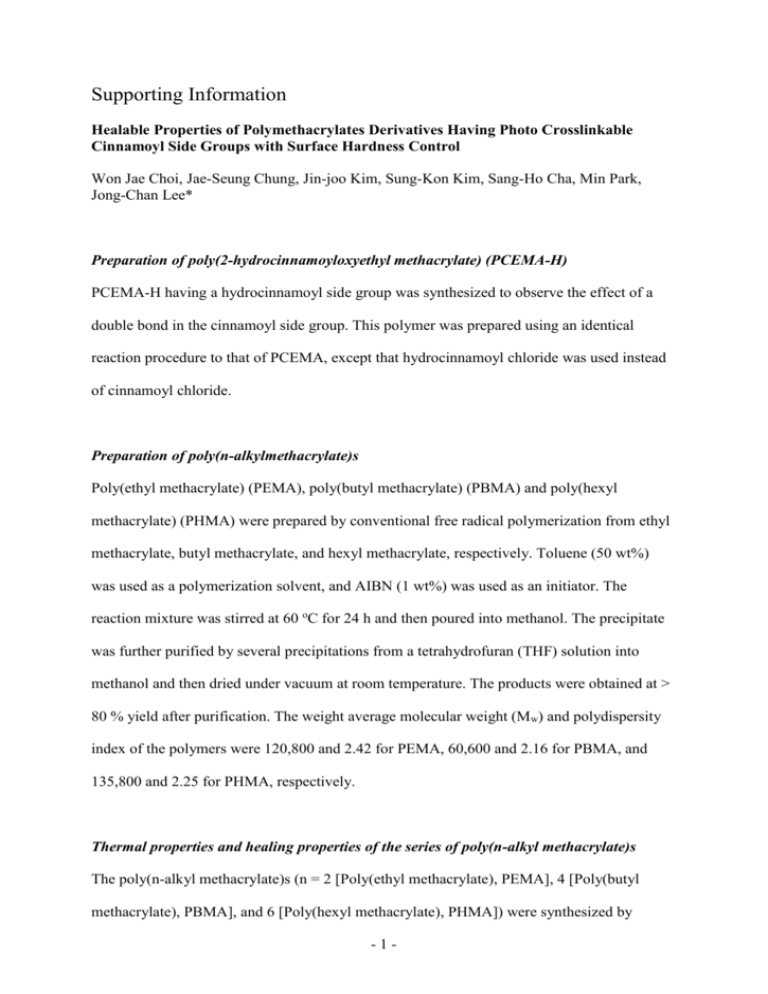
Supporting Information Healable Properties of Polymethacrylates Derivatives Having Photo Crosslinkable Cinnamoyl Side Groups with Surface Hardness Control Won Jae Choi, Jae-Seung Chung, Jin-joo Kim, Sung-Kon Kim, Sang-Ho Cha, Min Park, Jong-Chan Lee* Preparation of poly(2-hydrocinnamoyloxyethyl methacrylate) (PCEMA-H) PCEMA-H having a hydrocinnamoyl side group was synthesized to observe the effect of a double bond in the cinnamoyl side group. This polymer was prepared using an identical reaction procedure to that of PCEMA, except that hydrocinnamoyl chloride was used instead of cinnamoyl chloride. Preparation of poly(n-alkylmethacrylate)s Poly(ethyl methacrylate) (PEMA), poly(butyl methacrylate) (PBMA) and poly(hexyl methacrylate) (PHMA) were prepared by conventional free radical polymerization from ethyl methacrylate, butyl methacrylate, and hexyl methacrylate, respectively. Toluene (50 wt%) was used as a polymerization solvent, and AIBN (1 wt%) was used as an initiator. The reaction mixture was stirred at 60 oC for 24 h and then poured into methanol. The precipitate was further purified by several precipitations from a tetrahydrofuran (THF) solution into methanol and then dried under vacuum at room temperature. The products were obtained at > 80 % yield after purification. The weight average molecular weight (Mw) and polydispersity index of the polymers were 120,800 and 2.42 for PEMA, 60,600 and 2.16 for PBMA, and 135,800 and 2.25 for PHMA, respectively. Thermal properties and healing properties of the series of poly(n-alkyl methacrylate)s The poly(n-alkyl methacrylate)s (n = 2 [Poly(ethyl methacrylate), PEMA], 4 [Poly(butyl methacrylate), PBMA], and 6 [Poly(hexyl methacrylate), PHMA]) were synthesized by -1- conventional free radical polymerization and these polymers show identical Tg values as reported previously.[1] The Tg values of PEMA, PBMA, and PHMA were 70, 25, and -20 oC, respectively. The healing properties of the polymethacrylate series should be influenced by the Tg because these polymers have similar chemical structures and do not have any healable moieties such as maleimide-furan (Diels-Alder reaction) or a cinnamoyl group (photo crosslinking reaction) in the polymer structure. The only difference is the side chain length, which affects Tg and the chain mobility in the polymer film. To study the relationship between the glass transition temperatures of polymers and their healing properties, microsized artificial cracks (width: 20 ~ 40 μm) were made on the film surface of PEMA, PBMA, and PHMA, respectively, using a razor blade. Fig. S3 shows the optical microscopy (OM) images of PEMA (Fig. S3a and S3b) and PBMA (Fig. S3c and S3d) films treated at 50 (Fig. S3a, and S3c) and 80 oC (Fig. S3b, and S3d). The left and right parts of Fig. S3 show the morphology of polymer film surface before and after the heat treatment, respectively. When the damaged films were heated to suitable temperatures, higher than their Tgs, the damaged area vanished (right part of Fig. S3b, S3c, and S3d). In the case of PHMA, the damage on the polymer film was healed at even room temperature (20 oC) due to its very low Tg. When the artificial cracks were made on the film surface of PHMA, the cracks found to be healed almost immediately within 1 second. The gaps between the Tg and healing temperature were different in each polymer. For example, PEMA (Tg = 70 oC) required a healing temperature of 80 oC to heal the damaged area, whereas PBMA (Tg = 25 oC) required 50 oC for healing. PHMA (Tg = - 20 oC) did not require heating because room temperature is already 40 oC higher than its Tg. This might have occurred due to the difference of diffusion rate of the polymer chain segments. Fig. S3 shows that the micro-sized cracks in the general polymer films could be healed by heating at a higher temperature relative to their Tg without any healable moieties or external stimuli such as pressure and solvents. The scratch hardness -2- values for the poly(n-alkyl methacrylate)s were 2H, 3B, and < 7B for PEMA, PBMA, and PHMA, respectively, which corresponded well with their Tg values. Thermal properties and properties of PCEMA-H PCEMA-H was prepared and characterized using identical procedures to further understand the influence of the double bond in the cinnamoyl side group during the healing process via healing and/or UV irradiation. The healing properties, as stated above, were mainly affected by the Tg during the heating. The absence of double bonds in the cinnamoyl group affected side chain ordering, and PCEMA-H had a lower Tg (24.6 oC) than that of PCEMA (60.2 oC). The decrease in Tg slightly affected the healing properties (lower the required healing temperature than that for PCEMA), but it is nothing more or less than PBMA, because the PCEMA-H does not contain any photo responsive functional groups that can control the surface hardness. -3- Fig. S1. Representative chemical structure of the polymers used in this study. -4- Fig. S2. DSC curves of synthesized polymers. The black arrows indicate the glass transition temperature. -5- Fig. S3. Optical micrographs of the PEMA films healed at (a) 50 oC and (b) 80 oC and the PBMA films healed at (c) 50 oC and (d) 80 oC. -6- Reference 1. Kilburn, D, Dlubek, G, Pionteck, J, Alam, MA, “Free volume in poly(n-alkyl methacrylate)s from positron lifetime and PVT experiments and its relation to the structural relaxation” Polymer, 47, 7774-7785 (2006). -7-
